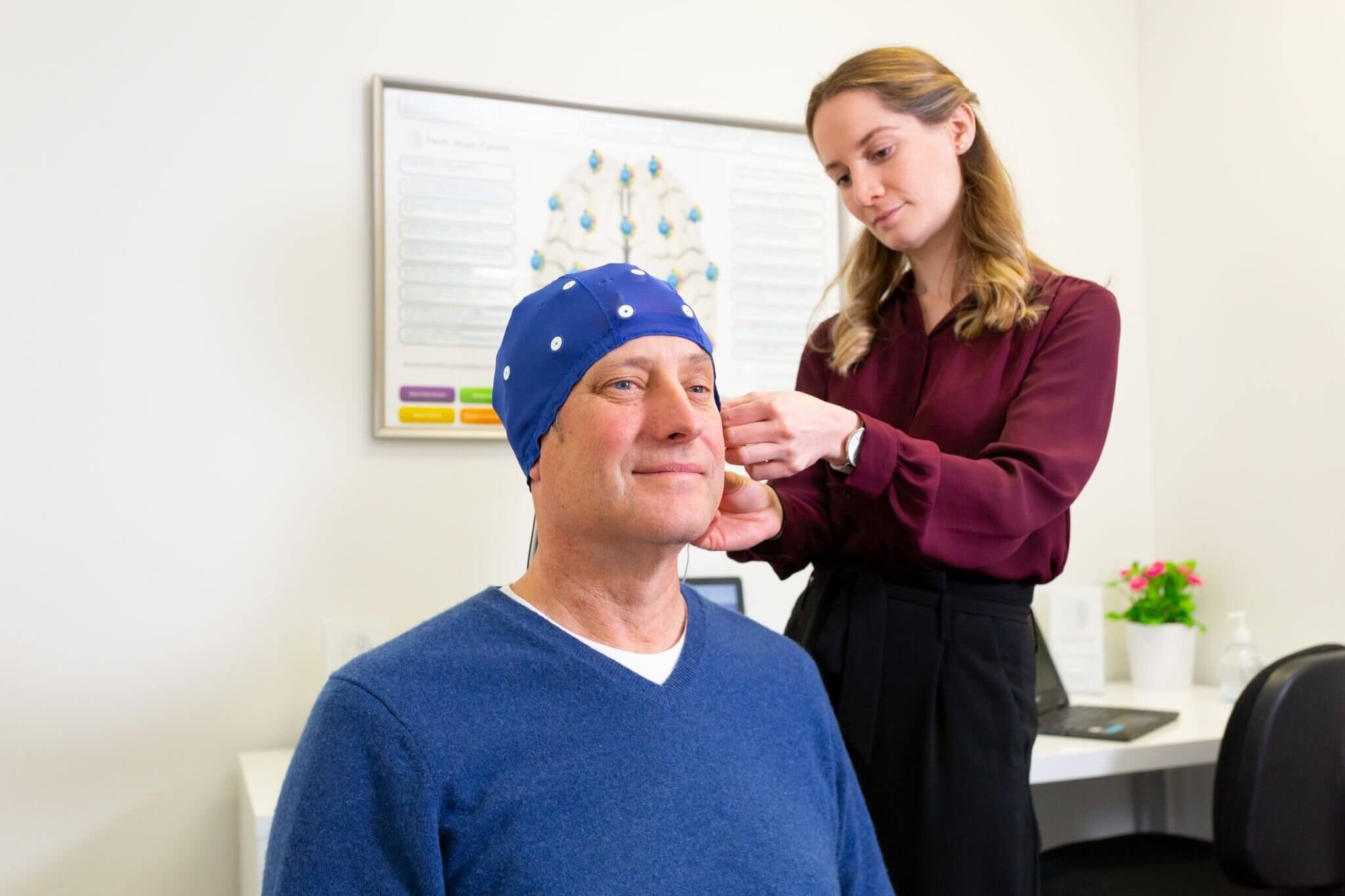
QEEG Brain Scans
QEEG Brain Scans
Perth Brain Centre uses functional brain imaging technology known as Quantitative Electroencephalogram (QEEG) Brain Scans and 3-Dimensional Brain Mapping, using Low-resolution Electromagnetic Tomography (LORETA).
Whilst most health professionals are familiar with Clinical EEG, many are not familiar with the sub-speciality of QEEG. QEEG was initially developed in the 1960s by researchers at The Brain Research Institute at The University of California (UCLA), who were working alongside NASA to develop a method of detailed analysis to help understand the effects of space travel on the human brain. Over the past 50 years QEEG has developed to be a primary tool in research neuroscience with almost 1000 studies published in peer-reviewed journals.
QEEG accurately maps brain function
QEEG Brain Scans are safe, appropriate for almost any age and conducted on-site in our clinic. Unlike standard CT and MRI scans which provide information about brain structure, QEEG Brain Scans provide important information about how the brain is working by directly measuring the electrical activity of the brain - EEG. Specialised software is used to compares an individual’s pattern of brainwave activity to reference databases (hence QEEG is also known as Referenced EEG). The results of this complex analysis are used to generate detailed images, known as “brain maps” which can used to help understand how the brain is working, for example (but not limited to) localising areas of under-activity or over-activity. This important information is used to help guide advice and to develop personalised treatment programmes.
The role of QEEG in diagnosis
“QEEG is a modern type of EEG analysis that involves recording digital EEG signals which are processed, transformed, and analysed using complex mathematical algorithms. QEEG has brought new techniques of EEG signals feature extraction: analysis of specific frequency band and signal complexity, analysis of connectivity and network analysis. The clinical application of QEEG is extensive, including neuropsychiatric disorders, epilepsy, stroke, dementia, traumatic brain injury, mental health disorders and many others. The role of QEEG is not necessarily to pinpoint an immediate diagnosis but to provide additional insight in conjunction with other diagnostic evaluations in order to provide objective information necessary for obtaining a precise diagnosis, correct disease severity assessment, and specific treatment response evaluation.” (Livint Popa L, Dragos H, Pantelemon C, Verisezan Rosu O, Strilciuc S. The Role of Quantitative EEG in the Diagnosis of Neuropsychiatric Disorders. J Med Life. 2020;13(1):8-15. doi:10.25122/jml-2019-0085).
QEEG and EEG, CT, fMRI, MRI, SPECT & PET
Quantitative Electroencephalogram (QEEG) Brain Scans (also known as Referenced EEG) are unique within the field of neuroscience and brain-imaging. QEEG directly measures brain activity (EEG), and therefore differs significantly from Functional MRI (fMRI), PET and SPECT scans all of which assess brain activity indirectly by measuring blood flow, the latter two examinations also requiring the use of radioactive tracers. It is important to note that EEG is not the same as Clinical EEG, and is not used to diagnose epilepsy. However The Perth Brain Centre uses specialised software which automatically detects seizures and spike activity, the presence of which would prompt onward referral.
QEEG and Research
QEEG is a primary tool in neuroscience and is used in research centres all over the world. Clinical research indicates that the clinical application of QEEG is extensive, including (but not limited to) neuropsychiatric disorders, epilepsy, stroke, dementia, traumatic brain injury and mental health disorders.






